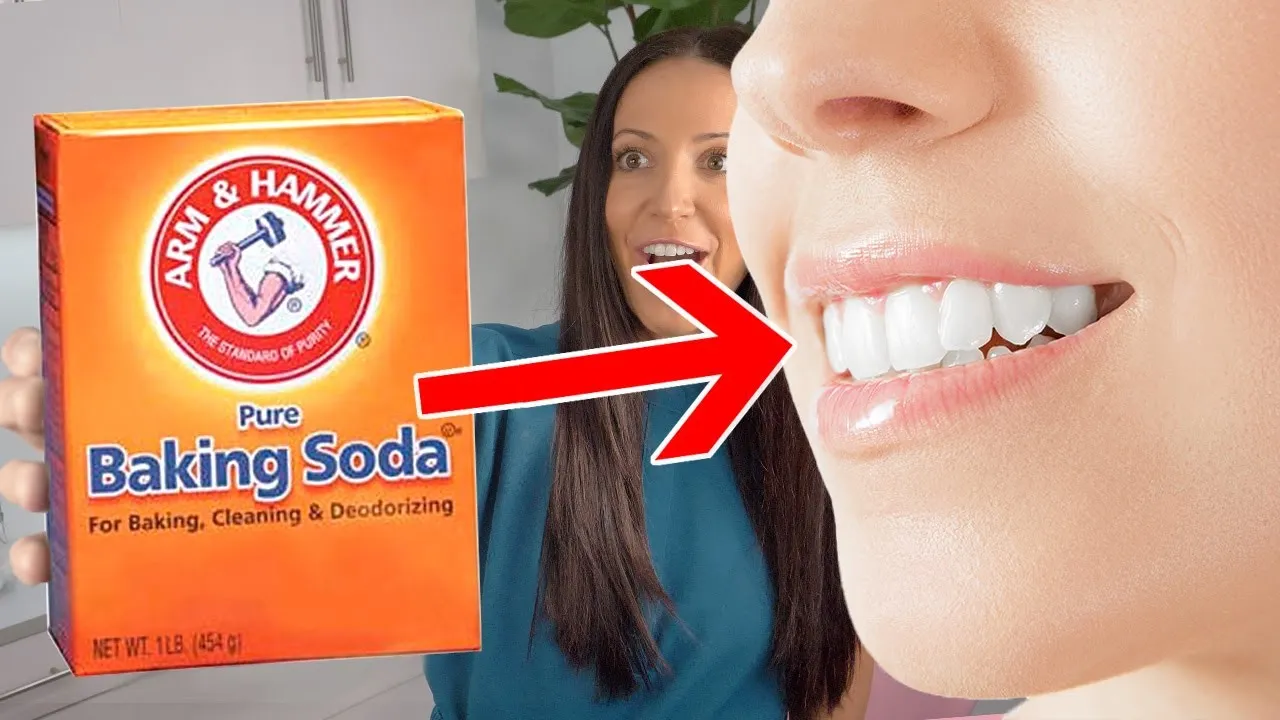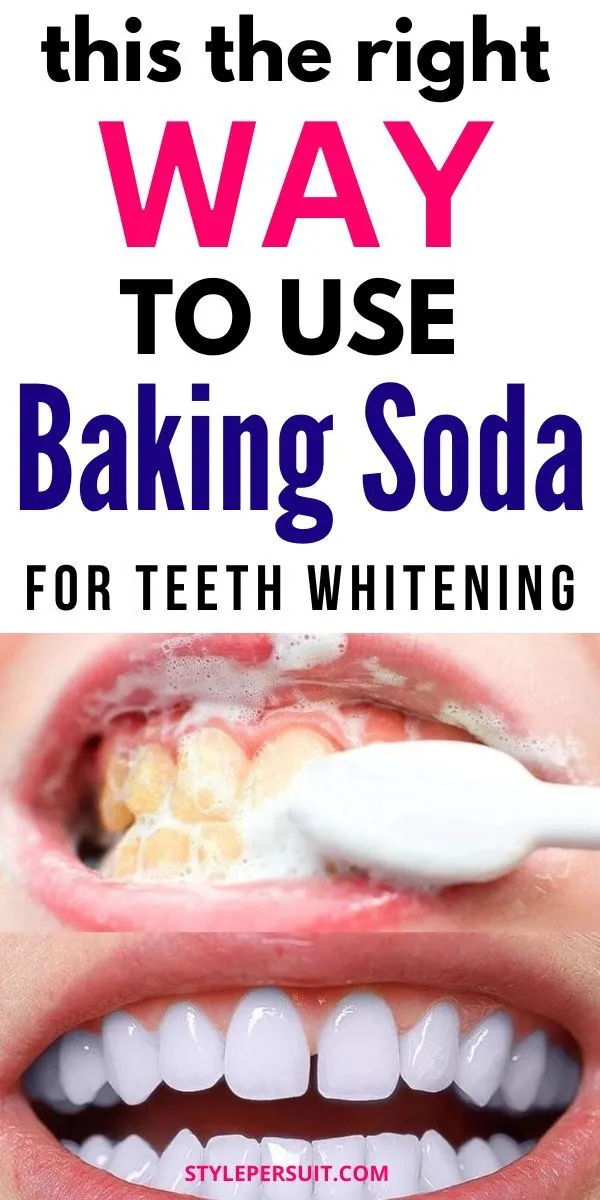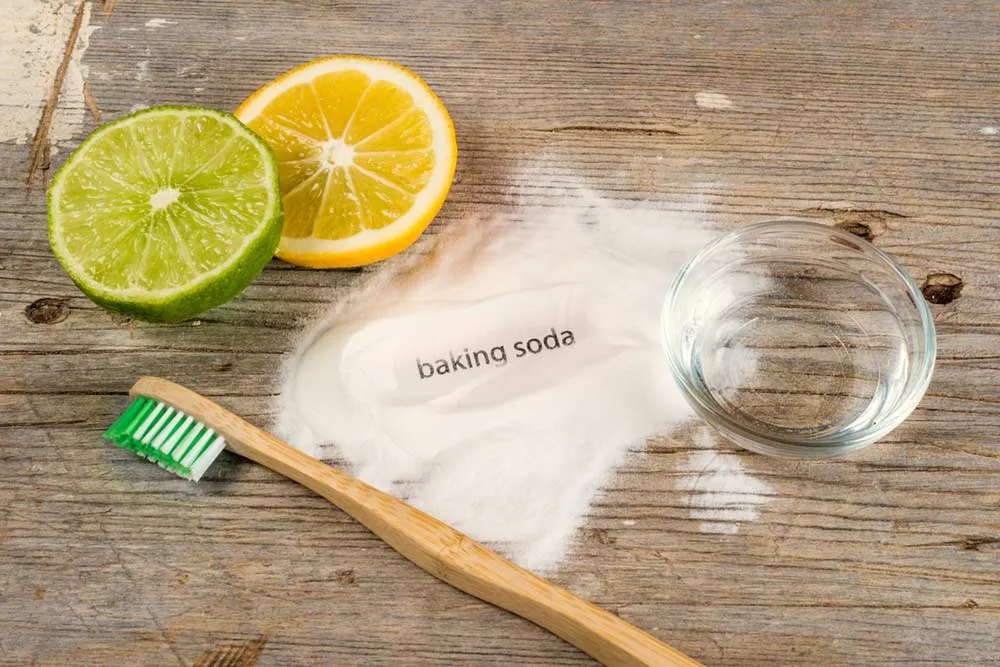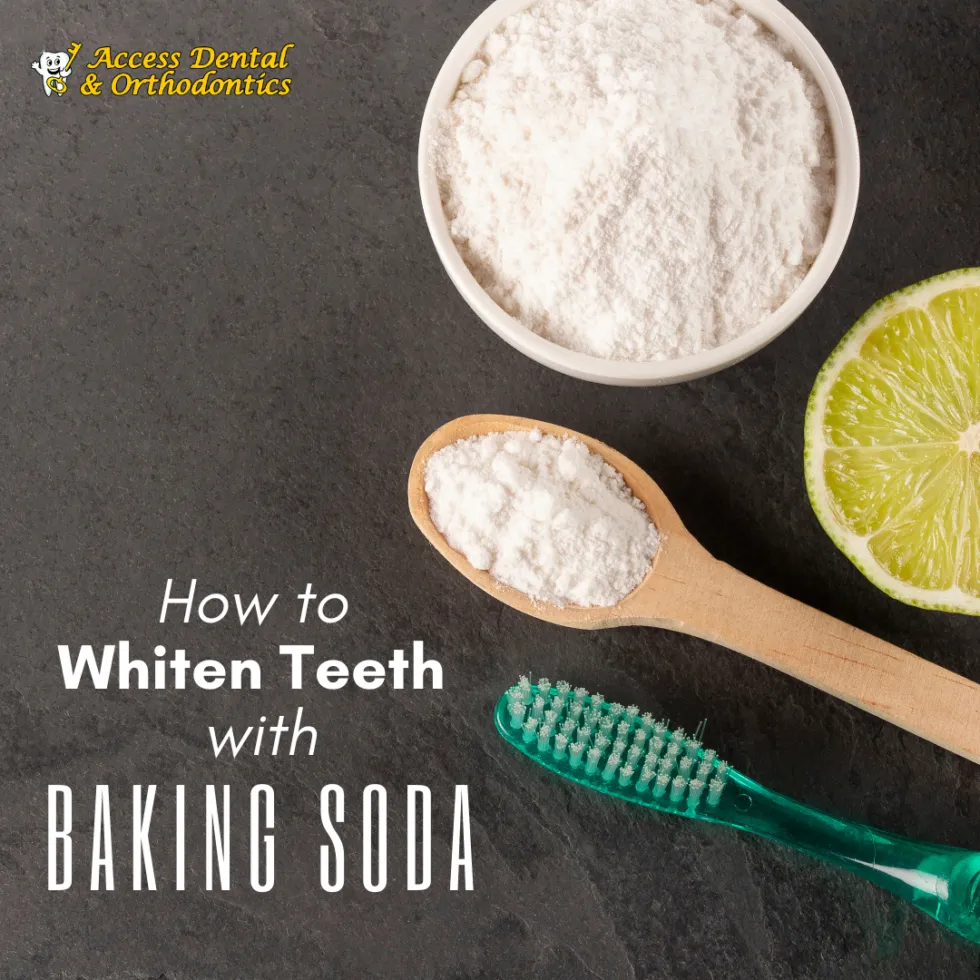What is Baking Soda Teeth Whitening
Baking soda teeth whitening has become a popular DIY method for achieving a brighter smile. It involves using sodium bicarbonate, a common household ingredient, to help remove stains and discoloration from the surface of your teeth. This approach offers an accessible and often inexpensive alternative to professional whitening treatments. However, it’s essential to understand how it works, the potential benefits, and the associated risks before incorporating it into your oral hygiene routine. This method is not a substitute for regular dental check-ups and professional advice. Always consult your dentist to determine the best approach for your specific needs and oral health condition. The use of baking soda should be carefully considered, keeping in mind the potential impact on your enamel.
How Baking Soda Whitens Teeth
Baking soda whitens teeth through a combination of physical and chemical actions. The primary mechanisms behind its whitening effect involve both its abrasive properties and its ability to neutralize acids. These combined actions help to remove stains and create a cleaner surface on your teeth. Although effective for surface stains, it’s crucial to understand that baking soda does not change the inherent color of your teeth. Its action primarily targets external stains caused by food, drinks, and smoking. The effects can vary from person to person, and are typically less dramatic than professional treatments. Always prioritize your oral health and follow recommendations from your dentist to ensure that your teeth remain healthy.
Baking Soda’s Abrasive Action

Baking soda acts as a mild abrasive. The small, granular particles of baking soda help to scrub away surface stains and debris. This mechanical action is similar to the way toothpaste removes plaque and food particles. Because of this abrasive quality, it’s important to use baking soda cautiously, as excessive or improper use can lead to enamel erosion. The abrasive nature makes it effective at removing stains, but this same characteristic can also damage the protective layer of your teeth. When used correctly and in moderation, the abrasive action of baking soda can contribute to a brighter appearance. The key is to balance the benefits with the potential risks, always considering your oral health and dental recommendations.
Baking Soda and its Alkaline Properties
Baking soda is alkaline, meaning it has a pH higher than 7. This alkalinity helps to neutralize acids in your mouth. Acids are created by bacteria and are the primary cause of tooth decay and enamel erosion. By reducing acidity, baking soda can create a more favorable environment for your teeth. This alkaline environment also helps to inhibit the growth of bacteria that cause cavities and bad breath. The buffering effect of baking soda can provide additional protection against the damaging effects of acidic foods and drinks. While the alkaline properties offer certain oral health benefits, it’s important to use baking soda in moderation. Overuse can disrupt the natural balance of your mouth and potentially cause other issues.
Making the Perfect Baking Soda Mixture
Creating the right baking soda mixture is crucial for effective and safe teeth whitening. The consistency and ingredients used play a significant role in achieving optimal results while minimizing potential risks. Proper mixing ensures that you can utilize the mixture correctly and safely. There are a variety of recipes that people use to create their own mixtures, and while this can be a fun process, it is always important to take the necessary precautions and avoid ingredients that may cause harm to your oral health. Always remember to use the mixtures in moderation and with the guidance of your dentist. This will help ensure you’re getting the most out of the process without compromising your dental health.
Baking Soda Mixture Recipe Guide

The basic baking soda mixture is easy to make. A common recommendation is to combine one teaspoon of baking soda with enough water to form a paste. You can adjust the amount of water to achieve your desired consistency. You will want to ensure that the mixture is not too abrasive. The paste should be thick enough to adhere to your teeth, but smooth enough to prevent excessive scrubbing. Stir the ingredients well to ensure that the baking soda is fully dissolved in the water and evenly distributed. A well-mixed paste is crucial for an even application and effective stain removal. The simplicity of this recipe makes it accessible, but remember to use it cautiously and in moderation to prevent harm to your teeth.
Baking Soda and Water Mixture
The simplest recipe involves just baking soda and water. Mix one teaspoon of baking soda with enough water to create a paste. This combination provides a basic cleaning and whitening effect. Apply the paste to your toothbrush and gently brush your teeth. Rinse thoroughly with water after brushing. This mixture is a straightforward method, but keep in mind that it might be too abrasive for some individuals. Always be mindful of how your teeth feel during and after use. Should you experience sensitivity or discomfort, consider reducing the frequency of use or consulting with your dentist. It’s important to balance the benefits with the potential risks to keep your teeth in optimal health.
Baking Soda, Lemon Juice, and Water Mixture
A popular variation combines baking soda with lemon juice and water. The lemon juice adds acidity, which some believe enhances the whitening effect. To make this mixture, combine one teaspoon of baking soda with a few drops of lemon juice and enough water to form a paste. Apply the paste to your teeth and allow it to sit for a short period before brushing and rinsing. Although this recipe might appear more effective, the high acidity of lemon juice can be very damaging to your enamel. Because of this, it is not recommended to make this mixture or use it frequently, as it may lead to sensitivity and enamel erosion. Consider this as a very occasional treatment if your dentist agrees. Otherwise, it’s best to avoid it to protect your teeth.
Baking Soda and Coconut Oil Mixture

Combining baking soda with coconut oil is another popular DIY method. Coconut oil is believed to have antibacterial properties and can help to improve the overall oral health. Mix one teaspoon of baking soda with one teaspoon of coconut oil to create a paste. The coconut oil can help to reduce the abrasiveness of the baking soda, making it gentler on your teeth. Brush your teeth gently with this mixture and rinse thoroughly. This combination is considered by some to be a less harsh option compared to using baking soda alone or with lemon juice. It is still important to use it in moderation and monitor how your teeth respond to the mixture. While coconut oil is generally gentle, excessive use can still cause issues.
How to Properly Use Baking Soda for Teeth Whitening
Proper technique is crucial when using baking soda for teeth whitening. The goal is to effectively remove stains while minimizing any potential damage to your enamel. Proper technique involves careful application, gentle brushing, and appropriate frequency. Always make sure to consult your dentist to ensure it’s the right method for your teeth and gums. A thoughtful approach and mindful technique will help you achieve a brighter smile with the least amount of risk. It is important to use the method carefully and in moderation and should not replace professional care and regular dental check-ups. Always prioritize the health of your teeth and follow any recommendations from your dentist.
Step-by-Step Application Guide
Start by preparing your chosen baking soda mixture. Once the mixture is ready, dip your toothbrush into it, ensuring a thin layer coats the bristles. Brush your teeth gently in a circular motion for approximately one to two minutes. Avoid scrubbing vigorously, as this can damage the enamel. Focus on brushing all surfaces of your teeth. Once you’re done brushing, rinse your mouth thoroughly with water, ensuring you remove all traces of the mixture. Use your regular toothpaste to brush your teeth as normal after using the baking soda mixture. This will help to remineralize your enamel and provide additional protection against stains. Remember to be gentle and patient throughout the process.
Frequency and Dosage of Baking Soda

Moderation is key when using baking soda for teeth whitening. Overuse can lead to enamel erosion and increased sensitivity. A common recommendation is to use a baking soda mixture no more than once or twice a week. This helps to balance stain removal with the need to protect your enamel. The amount of baking soda used should also be kept to a minimum. A small amount is usually sufficient to achieve the desired effect. If you experience any increased sensitivity or discomfort, reduce the frequency and amount used. Regularly assess the condition of your teeth and gums. Consult your dentist if you have any concerns. Prioritizing your oral health is the most important aspect.
Important Considerations and Potential Risks
While baking soda can be a helpful tool for teeth whitening, it’s important to be aware of potential risks and considerations. The effectiveness of this method can vary, and it might not be suitable for everyone. The primary risks are related to enamel erosion, increased sensitivity, and possible irritation of your gums. Before using baking soda, always consult with your dentist. This can help you determine if it’s a safe and appropriate option for your specific needs. Always be mindful of your oral health and watch for any signs of adverse reactions. It’s important to weigh the potential benefits against the risks and ensure you are taking the best course of action.
The Risk of Enamel Erosion
Enamel erosion is one of the primary risks associated with the overuse of baking soda for teeth whitening. Enamel is the hard, protective outer layer of your teeth. Baking soda’s abrasive nature can wear down this enamel over time, making your teeth more vulnerable to decay, sensitivity, and discoloration. Once enamel is eroded, it cannot be naturally replaced. It’s crucial to use baking soda sparingly and gently to minimize the risk of erosion. Always watch for any signs of increased sensitivity or changes in the appearance of your teeth. Regular dental check-ups are essential to monitor the health of your enamel and address any issues. Remember that prevention is key when it comes to dental health. If you’re concerned about enamel erosion, talk to your dentist about safer whitening options.
Sensitivity and Discomfort

Increased tooth sensitivity is another potential side effect of using baking soda for teeth whitening. As enamel erodes, the underlying dentin becomes exposed. Dentin contains tubules that lead to the nerve of the tooth, making it more sensitive to hot, cold, sweet, or acidic foods and drinks. If you experience sensitivity or discomfort after using baking soda, you should reduce the frequency of use or discontinue it altogether. Certain toothpastes that are specially formulated for sensitive teeth can help to relieve the discomfort. In some cases, a dentist may recommend a fluoride treatment to help strengthen the enamel. Your comfort and well-being should be prioritized. Consult your dentist if you experience any unusual symptoms.
Alternatives to Baking Soda for Teeth Whitening
If you’re looking for alternatives to baking soda for teeth whitening, there are several other methods you can consider. These alternatives often offer different approaches and varying levels of effectiveness and risk. It’s always best to discuss these options with your dentist. This will help you determine the most appropriate and safest way to whiten your teeth. The right choice depends on your specific needs, the condition of your teeth, and your desired results. There are other options available to achieve a brighter smile. Always prioritize the health and safety of your teeth and gums.
Professional Teeth Whitening Options
Professional teeth whitening is often the most effective method for achieving significant and lasting results. Dentists offer various treatments. These treatments often involve the use of concentrated bleaching agents, such as hydrogen peroxide, which are applied to the teeth to break down stains. In-office whitening procedures can provide immediate results. Your dentist can also provide take-home whitening kits with custom-fitted trays and stronger whitening solutions. Professional whitening treatments are generally safer than DIY methods because they are carried out under the supervision of a dental professional. They can monitor your teeth and gums for any adverse reactions. While professional whitening can be more expensive, it offers the most predictable results and the lowest risk of damage to your enamel.
Maintaining a Bright Smile

Once you’ve achieved a brighter smile, it’s important to maintain it with proper oral hygiene and healthy habits. This includes regular brushing and flossing, as well as regular dental check-ups. Your lifestyle choices also play a crucial role in maintaining the results of your teeth whitening efforts. Your goal is to keep your teeth bright and healthy for as long as possible. A consistent approach to oral hygiene and a healthy lifestyle will help you preserve your radiant smile and enjoy overall well-being.
Proper Oral Hygiene Practices
Good oral hygiene is essential for maintaining a bright smile. You should brush your teeth at least twice a day for two minutes each time, using fluoride toothpaste. Floss daily to remove plaque and food particles from between your teeth and below the gumline. Consider using an antibacterial mouthwash to further reduce bacteria in your mouth. Regular dental check-ups and cleanings are crucial to remove plaque and tartar that you can’t remove at home. Your dentist can also detect and treat any problems early on. A consistent oral hygiene routine is the foundation of a healthy and bright smile.
Dietary Recommendations for White Teeth
Your diet can significantly impact the color of your teeth. Certain foods and drinks can stain your teeth over time, while others can help to keep them white. Limit your consumption of stain-causing foods and drinks, such as coffee, tea, red wine, and berries. You can also use a straw when drinking beverages that are prone to staining, to minimize contact with your teeth. Include teeth-friendly foods in your diet such as fruits and vegetables. These foods help to stimulate saliva production. Saliva helps to neutralize acids and wash away food particles. Crunchy fruits and vegetables can also act as a natural toothbrush, helping to remove surface stains. A balanced diet that supports your overall health also supports your oral health and helps you maintain a bright smile.
